Last Updated on April 16, 2023
The Miniature Dachshund is a small-sized hound dog from Germany, originally bred to hunt badgers. It’s simply the mini version of the purebred Standard Dachshund.
Typically, male and female Mini Dachshunds can weigh between 9 lbs and 11 lbs (4 kg and 5 kg) and stand 5 to 6 inches (12.7 to 15.2 cm) tall at the shoulder.
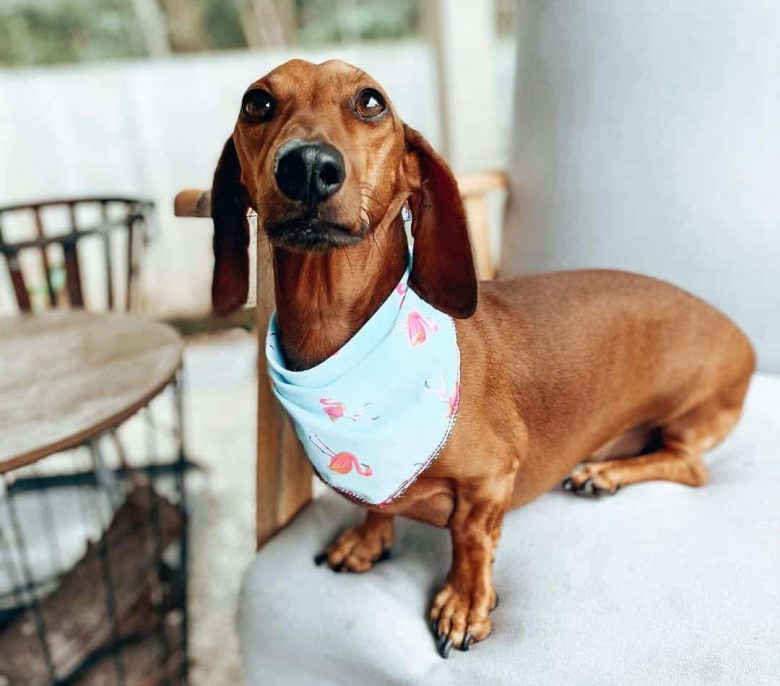
Also known as Mini Doxie, Wiener, or Sausage Dogs, Miniature Dachshunds have similar looks and characteristics to regular Dachshunds.
They have long bodies and short legs, which give them their distinctive “sausage” shape.
Their coat can be either smooth-haired, wire-haired, or long-haired and come in a variety of colors, such as red, black and tan, and cream.
Generally, Mini Dachshunds are lively, affectionate dogs that make excellent companions. However, they can be slightly difficult to train due to their stubbornness.
They are also prone to weight gain and back problems due to their proportions. For these reasons, it’s important to provide them with at least 30 minutes to 1 hour of exercise daily and feed them a healthy diet.
Read on to discover more about Miniature Dachshunds and learn how to keep them happy and healthy.
Quick Navigation
- 1 Mini Dachshund at a Glance
- 2 What’s the History Behind the Miniature Dachshund?
- 3 What’s the Difference Between a Mini Dachshund and a Standard Dachshund?
- 4 What are the Three Coat Varieties of Miniature Dachshunds?
- 5 What Coat Colors and Markings Do Miniature Dachshunds Have?
- 6 What are the Characteristics of Mini Dachshunds?
- 7 Do Mini Dachshunds and Standard Dachshunds Have Different Temperaments?
- 8 Are Mini Dachshunds Low Maintenance?
- 9 What Health Problems Do Miniature Dachshunds Have?
- 10 How Much Does a Mini Dachshund Puppy Cost?
- 11 Mini Dachshund Mixes
- 12 Who Should Get a Miniature Dachshund Dog?
- 13 Further reading: Other Miniature Dog Breeds
Mini Dachshund at a Glance
We’ve put together a table below to give you a quick overview of the Miniature Dachshund.
| Breed Summary | Mini Dachshund Quick Facts |
| Group | Hound |
| Breed Purpose | Hunting Dog |
| Breed Size | Small |
| Height | 5 to 6 inches (12 to 15 cm) |
| Weight | 9 to 11 lbs (4 to 5 kg) |
| Coat Type | Smooth-haired, wire-haired, or long-haired |
| Shedding | Moderate |
| Most Popular Coat Colors | Red, Black and Tan, Cream |
| Lifespan | 12 to 16 years |
| Temperament | Affectionate, Friendly, Playful |
| Energy | Moderate to high |
| Exercise Needs | 30mins to 1hr per day |
| Average Price | $500 and $1500 for a non-show pup |
What’s the History Behind the Miniature Dachshund?
Where exactly did the Mini Dachshund come from when there’s already a standard-sized sausage dog? How did they get to be smaller?
The Standard Dachshund (Doxie) was initially bred in Germany to hunt badgers and foxes. The nickname Badger dog came from the German words dachs, meaning “badger,” and hund, meaning “dog.”
The first variety of Dachshund was the smooth-haired Doxie which was initially bred from a Miniature French Pointer and a Pinscher.
In the 1800s, Germany began to breed smaller Sausage Dogs to hunt rabbits and burrow into smaller holes. Thus, the Miniature Dachshund was born.
These scent hounds got the nicked Little Burrow Dog since they could now fit into smaller burrows to hunt rabbits and weasels.
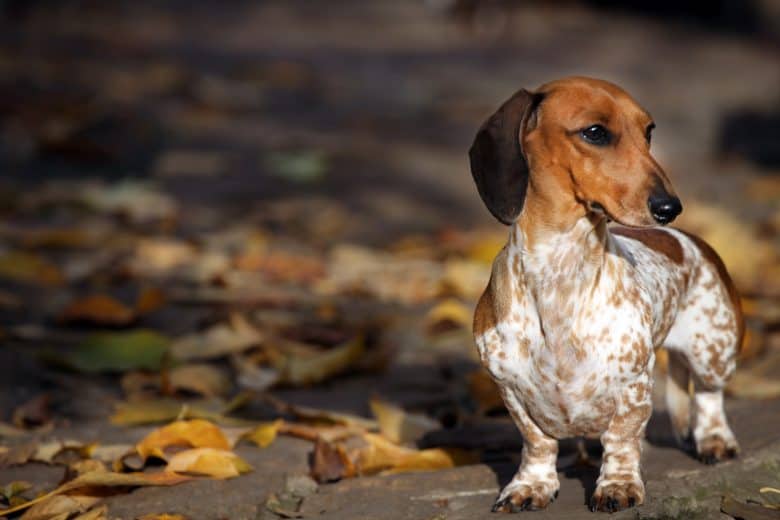
Mini Dachshunds were the runts of the litter until they were intentionally produced from a Toy Terrier and Pinscher. These dogs didn’t have the hunting tendencies as Standard Dachshunds, though.
During World War I and World War II, the Dachshund lost popularity, but in the late 1800s, due to the Miniature Dachshund hunting rabbits, they were brought over to the United States.
You can breed a standard-sized Wiener Dog with a mini one, but you’ll need to be careful if the female is the Mini Dachshund. She might have trouble giving birth. On the other hand, the size doesn’t matter when it comes to their litter of puppies.
Breeding two Standard Doxies together will not guarantee a standard puppy, and two minis bred together can have a little standard-sized puppy. It’s all chance.
However, just because these pups are smaller dogs doesn’t mean they are considered toy or teacup versions of the breed. Dachshunds fall under two categories only: Standard and Miniature.
What’s the Difference Between a Mini Dachshund and a Standard Dachshund?
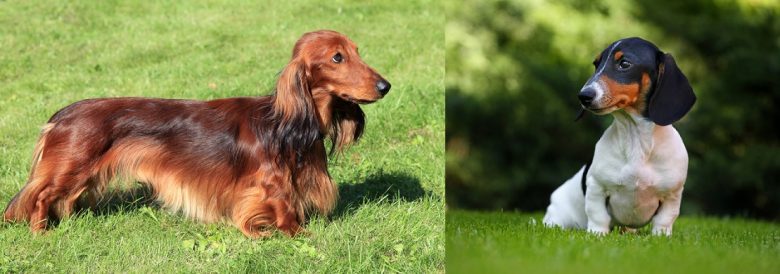
A Mini Dachshund is the same breed as a Standard Dachshund, and yes, the Mini Doxie is a purebred dog. The only difference between the two is their height and weight.
In a nutshell, Dachshunds have short, muscular legs and a long, narrow build. They are called the Sausage Dog or Wiener Dog for this reason.
Mini Dachshunds are also barrel-chested with muscled forequarters and hindquarters. Their front paws have arched toes with thick pads, and their back feet are smaller with thick pads. They have a long body with their spine stretching through their long, thin tail.
How big do Miniature Dachshunds get?
Male and female Miniature Dachshunds are typically about 5 to 6 inches (12 to 15 cm) tall and weigh about 9 to 11 lbs (4 to 5 kg).
They stop growing when they’re about 10 to 12 months old but will continue gaining muscle and weighing up until they’re two years old.
When your Mini Doxie is eight weeks old, it should weigh about 3 pounds. Then you’ll know it’s on track and healthy. You can simply check the size of the Dachshund by using a scale.

Your vet will give you an accurate height and weight check, but you can do it at home, too. One easy way to do so is to weigh yourself, hold your pup, and subtract the difference.
We’ve talked about Miniature Doxies which weigh up to 11 pounds and Standard Doxies which weigh about 16 to 32 pounds as the two types of Dachshunds recognized by AKC.
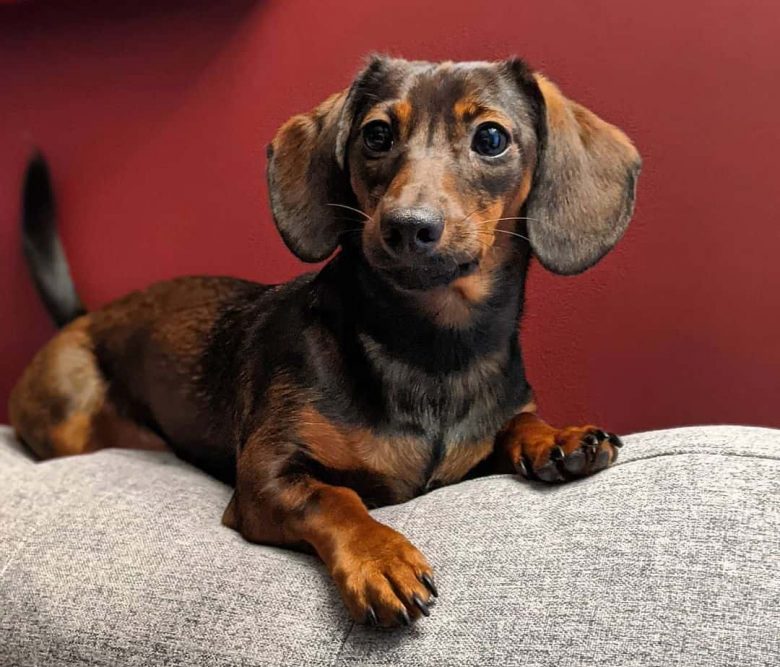
But did you know that there’s another type that weighs between 12 to 15 pounds? This is known as a Tweenie Doxie because it is in-between.
However, according to the American Kennel Club (AKC), the Tweenie Dachshunds will still be classified as a Standard Dachshund.
Learn more about Dachshund Growth and Weight Chart here.
What are the Three Coat Varieties of Miniature Dachshunds?
There are three coat varieties of Mini Dachshunds: short-haired, long-haired, and wire-haired. They all have the same short bodies and long legs, but they differ in terms of coat length and texture.
1. Smooth-haired Mini Dachshund
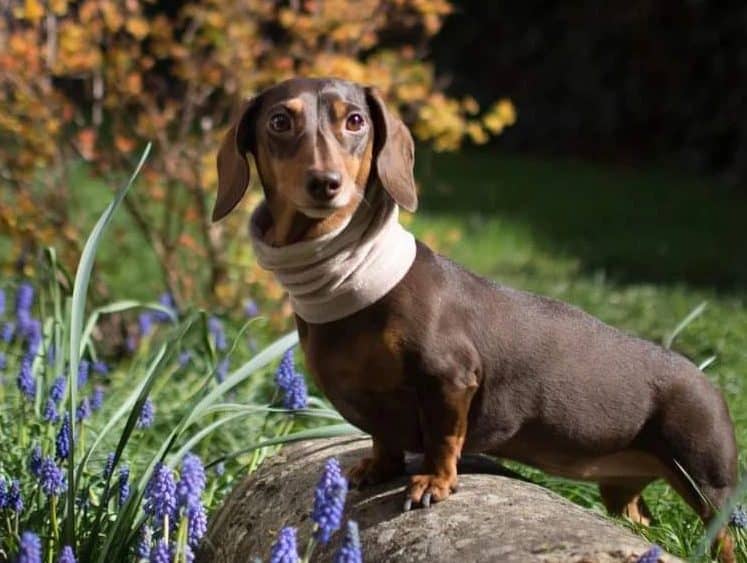
The short-haired variety is the most popular Mini Doxie and it’s characterized by a short, dense coat that’s smooth to touch and sheds minimally.
2. Long-haired Mini Dachshund

The long-haired variety of the Miniature Doxie has a thick, silky, straight coat that hangs down to its ankles. It has an undercoat that sheds seasonally.
3. Wire-haired Mini Dachshund
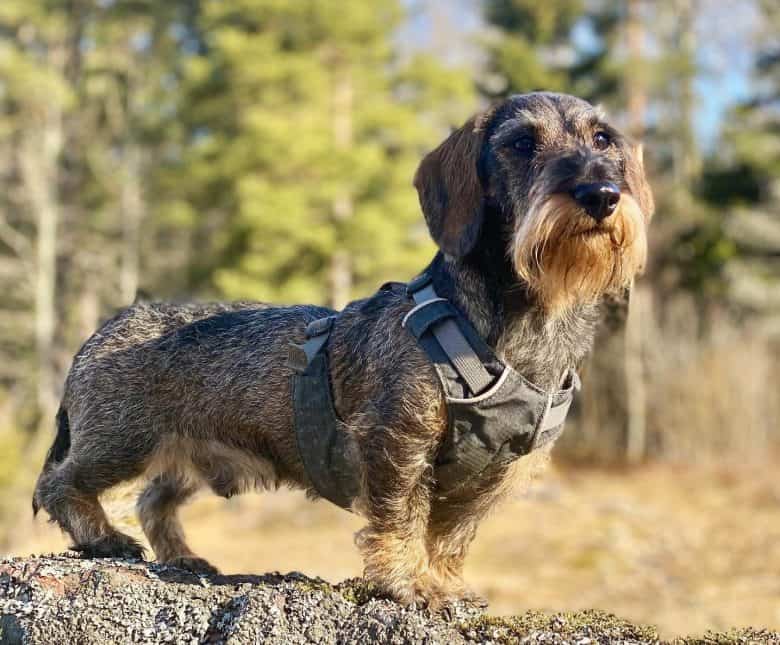
The wire-haired Mini Dachshund variety has a thick, wiry coat texture, forming an attractive mustache and beard. It’s the rarest coat variation of the Mini Doxie.
What Coat Colors and Markings Do Miniature Dachshunds Have?
Mini Dachshunds come in a variety of coat colors, the most common of which are red, cream, and ‘black and tan’.
However, there are also a number of rarer colors, including isabella, and ‘blue and tan’. These colors are accepted by the AKC breed standard.
Mini Sausage dogs also come in different patterns such as dapple, brindle, sable, and piebald which are recognized by AKC as standard markings.
Read our guide to learn more about the most popular Dachshund colors and markings.
What are the Characteristics of Mini Dachshunds?
Generally, Miniature Dachshunds are affectionate and friendly dogs that make them great family pets. They are known for being playful and need a moderate amount of exercise.
However, they’re also very stubborn and independent, which can make training them a challenge. But with patience and consistency, the Mini Dachshund can be easy to train just like other dog breeds.
To make it easier for you to learn more about the characteristics of the Miniature Dachshund, see the table below.
| Miniature Dachshund Characteristics |
Rating |
| Relation with family | 5 |
| Good with children | 4 |
| Friendly with strangers | 3 |
| Friendly with other dogs | 3 |
| Easy to Train | 2 |
| Energy Level | 4 |
| Barking Level | 5 |
| Mental Stimulation Needs | 3 |
Do Mini Dachshunds and Standard Dachshunds Have Different Temperaments?
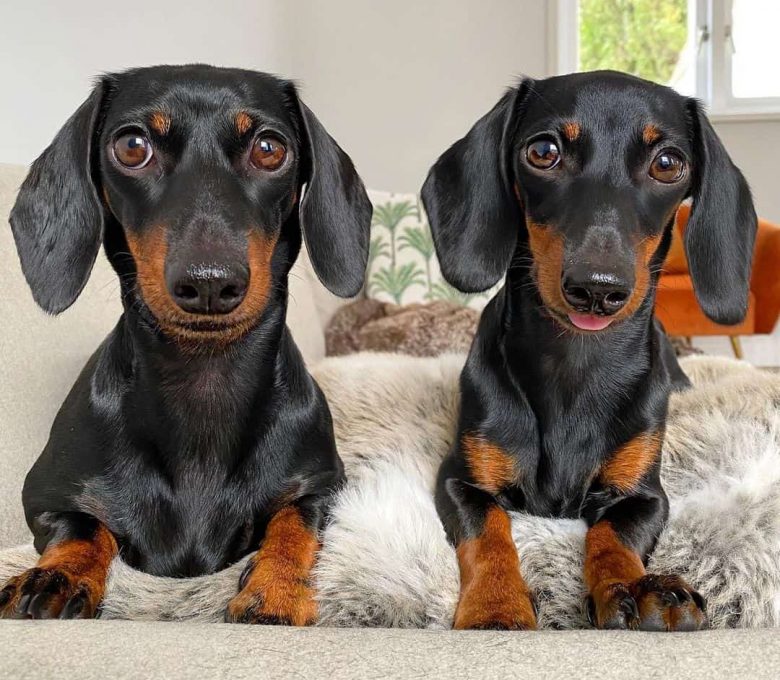
There’s no difference in personality traits when it comes to Mini Dachshunds and Standard Dachshunds.
They both make good family pets. They’re loyal and protective of their owners and love to cuddle. Even though they’re not considered lap dogs, they will undoubtedly pretend they are.
Are Miniature Dachshunds aggressive?
The Mini Dachshund breed can be aggressive due to territorial behavior, possessive behavior, defensive, fear, boredom, or poor communication.
However, these tendencies can be minimized with proper training and socialization.
Try to expose your Mini Doxie to a less intensive version of the triggers like going to the park or inviting people over.
You can also reward your pet when they stay calm and don’t act aggressively and stop giving them treats when you notice any aggression signs.
Do Mini Dachshunds bark a lot?
Yes, Mini Dachshunds are vocal, and they do bark a lot. They will bark loud and proud if they notice anything off or see something they want to chase.
Because of this and their hunting tendencies, Miniature Doxies make good watchdogs, despite their size.
This smaller dog will be attached to its owner and may develop separation anxiety, causing them to bark more when distressed.
However, they can be left alone for short periods with proper crate training and a solid routine.
Of course, it wouldn’t hurt to have more than one Mini Doxie around the house, which is another reason why Dachshunds would do well in pairs.
Just look at this video of an adorable Mini Dachshund puppy with her new older sister!
Are Miniature Dachshund dogs easy to train?
Miniature Dachshunds are intelligent, but they’re independent and stubborn. This can make it a bit challenging to train them.
They may have selective hearing and know exactly what you want them to do, but they will ignore you.
Like all dogs, they require patience and consistency from their owners. With time and effort, most Mini Dachshunds can be trained to obey basic commands.
Are Mini Dachshunds Low Maintenance?
Generally, Mini Dachshunds are considered one of the lower-maintenance breeds, thanks partly to their small size.
They do not require a lot of exercise, and their short coats are relatively easy to groom. However, a few things to remember when considering a Mini Dachshund.
- Their small size makes them vulnerable to cold weather, so they must be kept indoors or given a sweater when they go outside.
- They are prone to back problems, so it’s important to provide them with a soft bed and avoid letting them jump off furniture.
With proper care, Miniature Dachshunds can make great companion pets for people who don’t have much time for dog maintenance.
How much exercise do Miniature Dachshunds need?
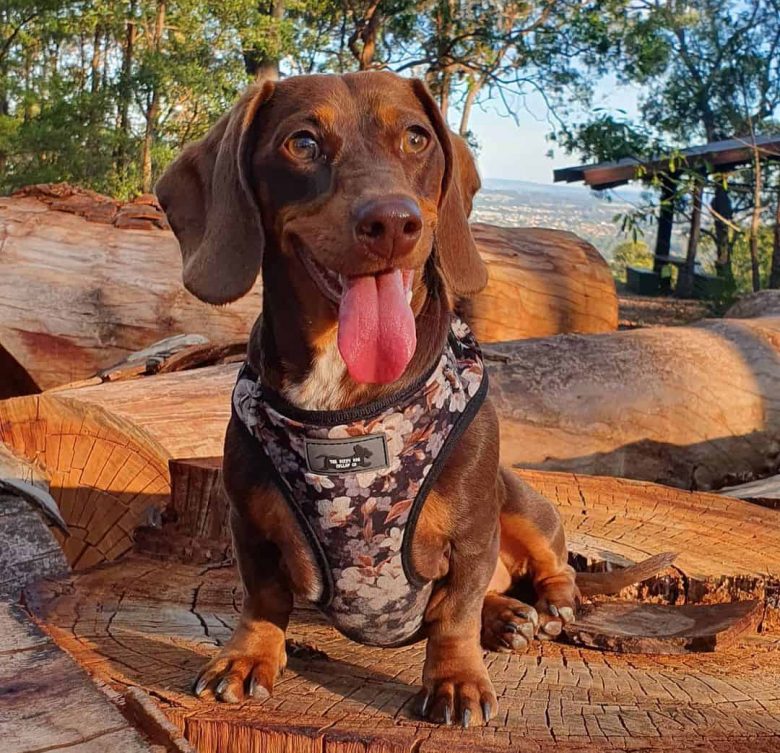
Mini Doxies have a moderate-to-high energy level. Due to their hunting nature, they’ll need quite a bit of physical exercise. However, they may not need as much exercise as Standard Dachshunds because they’re smaller.
Give your Mini Dachshund enough walks and playtime throughout the day to keep them physically and mentally happy and healthy.
They will enjoy walking for at least 30 minutes to 1 hour per day and chasing a ball around in the backyard.
Just be careful not to strain your pup too much with jumps, as it can hurt their long backs.
Do Miniature Dachshunds shed a lot?
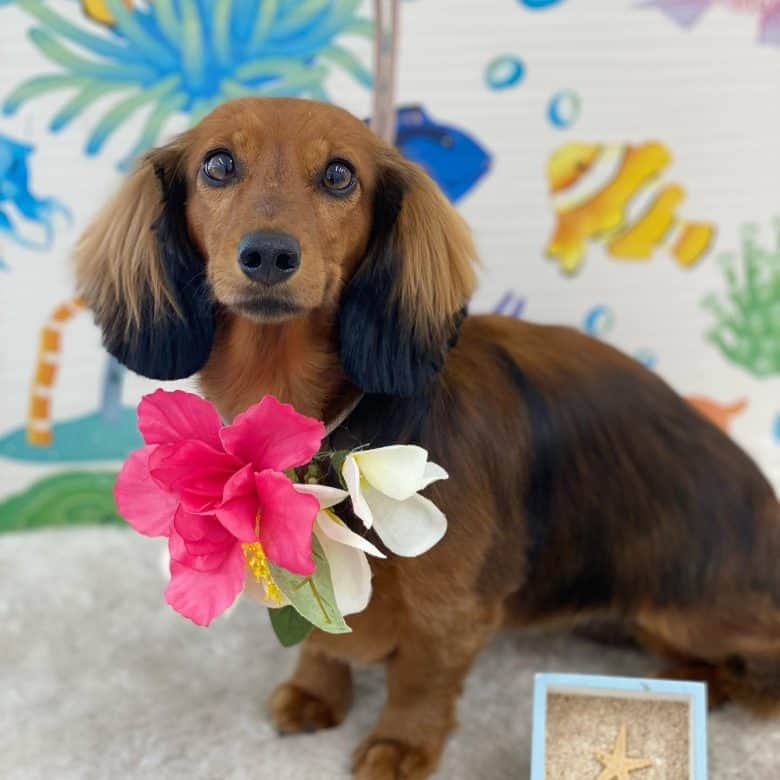
Like Standard Dachshunds, a Mini Doxie is not considered hypoallergenic and will shed a moderate amount. Depending on their coat type, grooming care will differ.
For example, smooth-haired Doxies will need brushing once a week, while wire-haired Dachshunds will need weekly brushing with occasional grooming to have their undercoat stripped.
Long-haired Dachshunds require brushing at least twice a week and regular grooming to keep mats in check and trim the fur around the ear, belly, and legs.
Doxies don’t smell unless they roll in something they’re not supposed to, so baths don’t need to happen too often unless they have a skin condition.
How much should a Mini Dachshund eat?
It’s easy for Mini Dachshunds to turn into literal sausage dogs and become overweight.
Miniature Doxie puppies should eat about three small meals daily, while adults can have one to two meals per day or about ½ to ¾ cup of dry food.
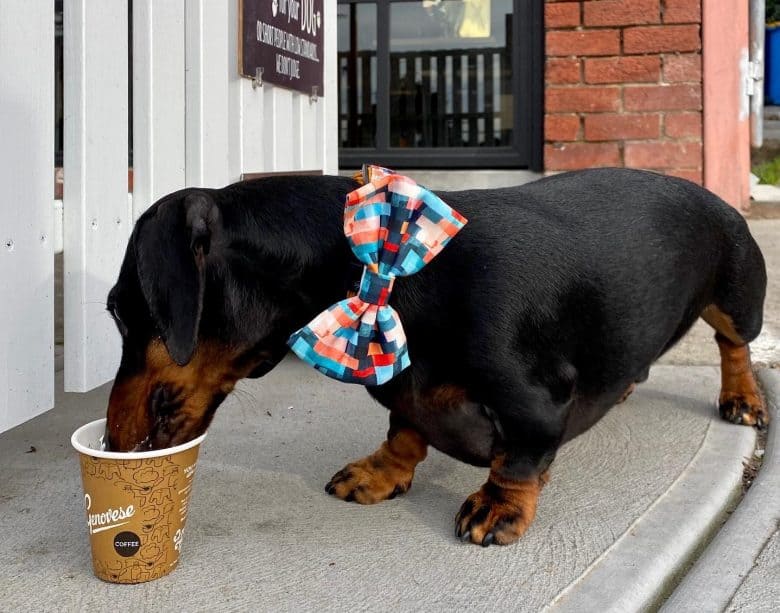
What is the best food for Miniature Dachshunds?
The best food for a Miniature Dachshund should be tailored to its specific nutritional needs and breed size.
Mini Doxies are small dog breeds with moderate to high energy levels, so they need a diet high in protein to help them maintain their lean muscle mass.
Since Miniature Dachshunds are also prone to obesity due to their small legs and having difficulty getting around and exercising as much as other dog breeds, they need a diet with a moderate level of fat.
They also need dog food with adequate calcium to support their bones and joints.
Read our article about the 8 Best Dog Food for Dachshunds to get an in-depth review of each recipe.
What Health Problems Do Miniature Dachshunds Have?
Like the Standard Dachshunds, Mini Doxies, unfortunately, have health problems. One of them is joint pain, such as back problems due to their long spine.
This is commonly known as Intervertebral Disc Disease (IVDD). This can happen when your pup jumps off the furniture or is being held wrong.
They can also get patellar luxation, which is when their kneecap moves out of place. This is common in smaller dogs and can happen due to their short legs and their energy levels.
Alternatively, they can get hip dysplasia, which is when their hip gets dislocated.
Other health problems include issues with their eyes, such as progressive retinal atrophy (PRA), a degenerative eye disorder. They are also prone to glaucoma and cataracts.
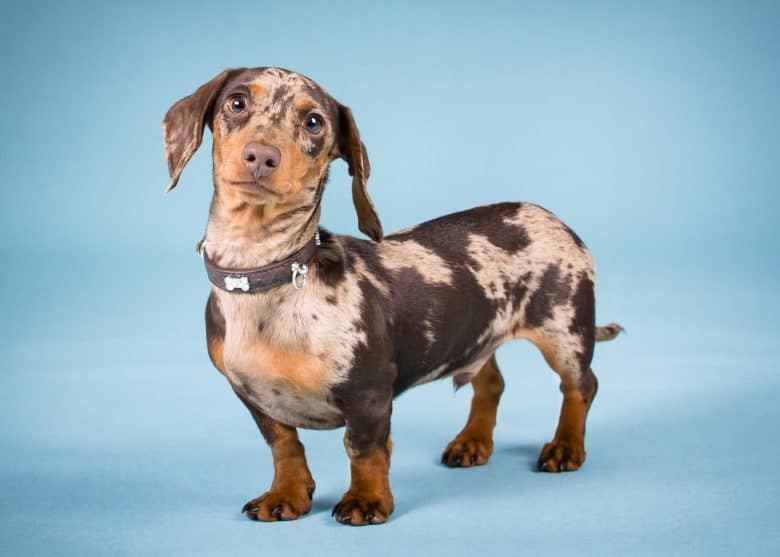
Double Dapple Mini Dachshunds, also known as homozygous merles, are prone to being deaf and having visual issues.
These are smaller Dachshunds with a dapple patterned coat that is bred together, creating a double dapple. Read our guide to learn more about the rare Dapple Dachshund.
Obesity is common in Miniature Dachshunds. Due to their size, it’s essential to keep your pup on a regular exercise routine as well as a nutritional diet catered to your dog and its size.
If you’re unsure about anything, speak to your vet, so your furry friend doesn’t gain too much weight.
Other health problems of Mini Doxies may include:
- Epilepsy
- Cushing’s Disease
- Gastric dilatation-volvulus (also known as bloat or torsion)
- Diabetes
The best way to keep your pup’s health in check is to take them on regular vet visits and to have various health screenings such as a cardiac exam, ophthalmologist evaluation, and a patella evaluation.
What is the average lifespan of a Mini Dachshund?
Typically, smaller dogs have a longer lifespan than bigger dogs. This also applies to the Dachshund dog breed. Mini Dachshunds live about 12 to 16 years, whereas Standard Doxies can live around 12 to 14 years.
Read our article about Dachshund Lifespan to learn more about how to extend the life expectancy of your Doxie.
How Much Does a Mini Dachshund Puppy Cost?
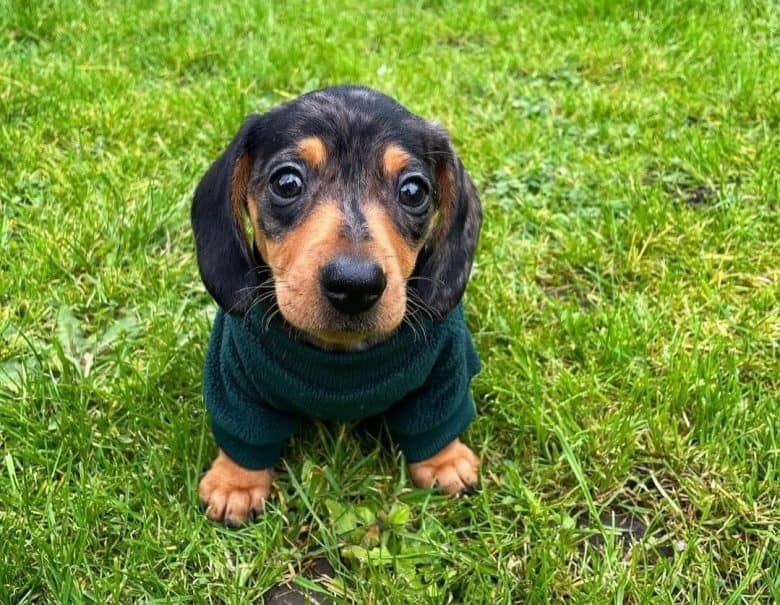
The average price of a non-show Mini Dachshund puppy is between $500 and $1500, while a show-quality Miniature Doxie is more expensive and costs as much as $4000 or even $5000 from reputable breeders.
Mini Dachshunds tend to cost more than Standard Doxies since smaller pets are in demand. A Standard Dachshund is only around $500 to $1000 for a non-show pup and $3000 from a registered breeder.
Other factors that can affect the Mini Doxie price are the breeder’s reputation and location, health screenings and medical expenses, coat colors and markings, and whether or not they’ve been spayed or neutered.
Since Mini Dachshunds are sought-after, they can be expensive, especially if they’re from trustworthy AKC breeders.
Read our complete guide to Dachshund Price to learn more about the initial and long-term costs of owning a Mini Doxie.
Breeders for Miniature Dachshunds

There are many reputable breeders of Miniature Dachshunds. You can find them by searching online or contacting your local kennel club.
Some things to look for in a breeder include experience, health clearances, and a commitment to the welfare of their dogs.
A reputable breeder will know the differences between a Standard Doxie and a Mini Doxie. They will also be able to answer your questions about the breed and help you decide if a Miniature Dachshund is a suitable dog for you.
A great place to find a reputable Miniature Dachshund breeder is to look at the Dachshund Club of America Directory.
When choosing a breeder, remember that you’re looking for someone who will be a partner in ensuring that you and your pup have a long and happy life together.
Rescues and Shelters for Miniature Dachshunds
If you’re looking for an affordable Mini Dachshund, you can adopt or rescue it from a local shelter. You can expect to pay anywhere from $300 to $700, including the registration fee, vaccinations, or deworming.
Here are some of the best Dachshund rescues for adoption in the United States. We’ve selected the top local shelters that operate in various states nationwide.
- Little Paws Dachshund Rescue
- All American Dachshund Rescue
- Coast to Coast Dachshund Rescue
Mini Dachshund Mixes
Mini Dachshunds are purebred, but they can be bred with other toy breeds to give us adorable teacup mixes such as the Chiweenie, Dameranian, and Dorkie.
If you’re considering getting a Wiener mixed breed, see our complete list of the 30 Popular Dachshund Mixes to help you decide which one is right for you.
Who Should Get a Miniature Dachshund Dog?
If you’re considering getting a small dog breed that makes a great family pet, then a Miniature Dachshund is a good choice.
Mini Dachshunds may be prone to boredom and destructive behavior if left alone for too long, bark a lot and require a bit of physical exercise, but they’ll love you with all their heart, remain loyal, and be the best companion.
Have we convinced you to add this furry friend to your home? Let us know in the comments!
Further reading: Other Miniature Dog Breeds
- Miniature Pinscher
- Miniature American Shepherd
- Miniature Bull Terrier
- Miniature Collie
- Miniature Boxer
Cess is the Head of Content Writing at K9 Web and a passionate dog care expert with over 5 years of experience in the Pet Industry. With a background in animal science, dog training, and behavior consulting, her hands-on experience and extensive knowledge make her a trusted source for dog owners.
When not writing or leading the K9 Web content team, Cess can be found volunteering at local shelters and participating in dog-related events.

I have a mini doxi little girl name Zoey, she is a pistol, she was a very nervous puppy even before her eyes were open, I went to the breeders house to see the pups when they were very young and when I picked her up she spread out all 4 legs like I was gonna drop her, I never seen nothing like it but I new I wanted her, she’s definitely my dog, glued to me on certain things like working in the garden or outside in general and my husband’s girl when he’s staying up late, she will be 11 years old Fed. 14 2022
Yes! thank for the information. I just got a miniature dachshunds and I’m having fun learning so many great things about the breed <3